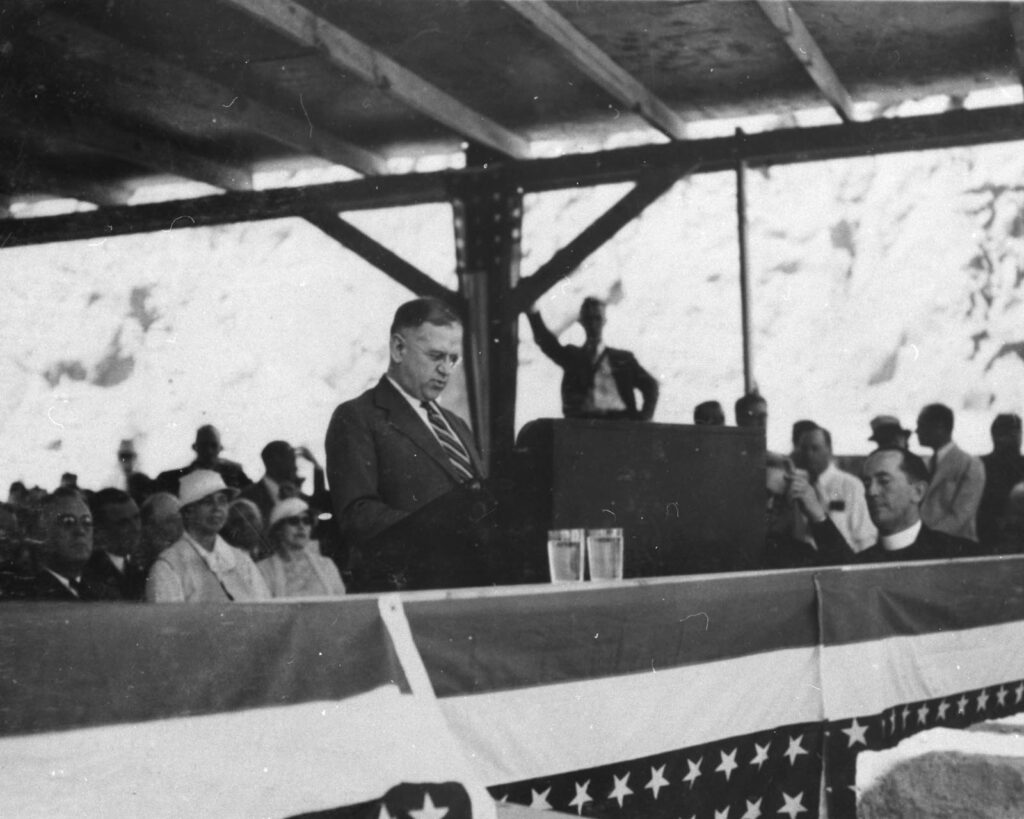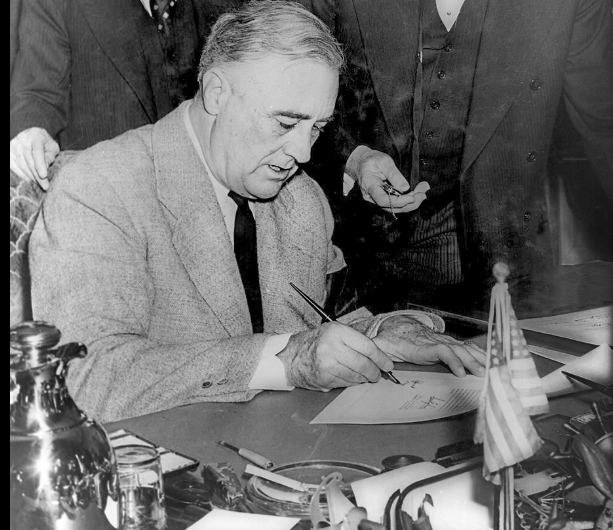The autumn of 1938 was a grim time for the Jews. The Nazis’ Kristallnacht pogrom had devastated German Jewry. The Evian conference, which was supposed to find havens for Jewish refugees, had proven to be a farce. And Britain was preparing to shut the doors of Palestine.
But on Thanksgiving Day, one courageous U.S. government official proposed a bold rescue plan, offering the Jewish people a glimmer of hope and reason to give thanks.
The plan’s target: Alaska.
Rich in natural resources but badly underpopulated, the vast northern territory, which the U.S. had purchased from Czarist Russia for $7-million, was the unlikely refugee haven suggested in 1938 by Secretary of the Interior Harold L. Ickes.
Ickes toured Alaska that summer, meeting with local officials to discuss ways to attract settlers to develop the region. At the same time, Japan’s aggression against China and the likelihood of war in Europe intensified American concerns about Alaska’s strategic value—and its vulnerability.
But previous attempts by the U.S. government to draw settlers to the northwestern frontier had failed. Who was willing to brave Alaska’s harsh climate?
Kristallnacht provided the answer. From the smoldering ruins of the synagogues and Jewish homes that the Nazis burned to the ground was born the idea of German Jewish refugees developing and fortifying Alaska.
As Sen. William King (D-Utah) pointed out, refugees from Hitler, when confronted by the hardships of frontier life, “would not be thinking of the comforts of life in the states that they had sacrificed, but in terms of the savagery and hopelessness of the conditions abroad from which they had been rescued.”

At a press conference on Thanksgiving eve—two weeks after Kristallnacht—Secretary Ickes proposed Alaska as “a haven for Jewish refugees from Germany and other areas in Europe where the Jews are subjected to oppressive restrictions.”
Alaska was “the one possession of the United States that is not fully developed,” Ickes pointed out. He noted that 200 impoverished families had recently relocated from the dust bowls of the American West to the 23,000-mile Matanuska Valley in south central Alaska. Ickes predicted their pioneering efforts would “open up opportunities in the industrial and professional fields now closed to the Jews in Germany.”
Like the brave pilgrims of the Mayflower who landed at Plymouth Rock three hundred years earlier, the Jews would flee intolerance in Europe and carve out a new life for themselves in a land of liberty.
The Interior Department proceeded to prepare a full report, explaining the vast economic potential of Alaska, the military risks of leaving the area unpopulated, and the logic of bringing in “hundreds of thousands of pioneers” from other countries. The regular immigration quotas would not apply, since Alaska was not yet a state. Based on the report, King and Rep. Franck Havenner (D-Calif.) introduced legislation to allow refugees to settle in Alaska.
Refugee advocates created a National Committee for Alaskan Development, which built an ecumenical coalition of VIPs to back the legislation. Endorsers included Academy-Award winning actors Luise Rainer and Paul Muni, renowned theologian Paul Tillich, and the Federal Council of Churches.
Anti-immigration groups rallied against the legislation, claiming King-Havenner would open America to “Trojan horses,” such as Jews who believed in “the Marxian philosophy.” The most important opposition came from the State Department, which regarded the bill as an attempt to sneak aliens into the United States through the back door.
The key to the bill’s fate was the position that President Franklin D. Roosevelt would take. Strong leadership by the president might have made a difference. Unfortunately, Secretary Ickes already had some disappointing experiences with FDR when it came to the Nazis and the Jews.
In 1935, Roosevelt compelled Ickes to remove critical references to the Hitler regime from the draft of his commencement speech at the University of Alabama. Likewise, in April 1938, FDR insisted that Ickes “cut out the references that I had made to Naziism” in a forthcoming speech, Ickes wrote in his diary. And again that November, when Ickes was preparing a speech in response to the Kristallnacht pogrom, the president ordered Ickes “to cut out all references to Germany by name as well as references to Hitler, Goebbels, and others” from his draft. Roosevelt was concerned that such criticism would harm U.S.-German relations.

Especially ominous for the Alaska plan’s prospects was the refusal of the White House to even let Ickes gently suggest, in his draft of a December 1938 speech, that ‘in time,’ the United States might yet ‘return to its former noble historic policy’ regarding immigration.
Sure enough, when Ickes met with FDR on November 7, 1939 about the Alaska proposal, he found the president would accept only 10,000 settlers per year for five years, and of that number “not more than 10 percent would be Jews [so] we would be able to avoid the undoubted criticism that we would be subjected to if there were an undue proportion of Jews.”
In the end, Roosevelt was not willing to call for even that many immigrants; he refrained from saying anything publicly about the Alaska issue. Without the backing of the White House, the Alaska proposal never got off the ground.
The plan that Ickes broached on that hopeful Thanksgiving in 1938, offering a chance at life for Europe’s Jews, ended up in the growing pile of proposals for refugee havens that President Roosevelt and his administration discarded for the sake of political expediency.
(Dr. Medoff is the founding director of The David S. Wyman Institute for Holocaust Studies and author of more than 20 books about Jewish history and the Holocaust. His latest is The Road to October 7: Hamas, the Holocaust, and the Eternal War Against the Jews, published by the Jewish Publication Society & University of Nebraska Press.)




